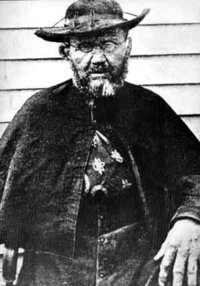INTRODUCTION: Leprosy is a chronic granulomatous infection of the skin and peripheral nerves with Mycobacterium leprae. It can be difficult to distinguish from other granulomatous diseases, including sarcoidosis. This case describes lepromatous leprosy presenting as neuropathy and non-caseating granulomas of the skin presumed to be neuro-cutaneous sarcoidosis.
CASE PRESENTATION: A 34 year-old male from India with a five-year history of mononeuritis multiplex affecting the distal lower extremities and diffuse rash was referred to our sarcoidosis clinic for management of his presumed neuro-cutaneous sarcoidosis. Physical examination revealed multiple indurated erythematous plaques on the cheeks, forehead and left ear, as well as violaceous and hypopigmented patches on the bilateral upper and lower extremities. There was decreased sensation on the dorsum of both feet and lateral aspect of the left leg. Left cheek biopsy demonstrated noncaseating granuloma. Sural nerve biopsy revealed very prominent round cell infiltration of the endoneuria and epineurium. Skin smear was negative for acid-fast bacilli (AFB). Fite stain for Mycobacterium leprae was negative. Serum angiotensin converting enzyme (ACE) level, vitamin D level, and urinary calcium were normal. Chest radiograph was normal, and pulmonary function tests revealed a mild restrictive pattern with a mild diffusion impairment. Prednisone was started with mild improvement of his neuropathy. Multiple attempts at weaning steroids caused worsening of his neuropathy, and steroid-sparing agents were added. His rash persisted despite 5 years of treatment with varying doses of prednisone and hydroxychloroquine. Repeat biopsy of his skin rash revealed multiple large nodular histiocytic infiltrates throughout the dermis, and Fite stain revealed numerous intact AFB, consistent with lepromatous leprosy. The patient was subsequently hospitalized at the National Hansen's Disease Programs Center in Louisiana and after additional skin biopsies the diagnosis of lepromatous leprosy was confirmed. Monthly rifampin and clofazimine as well as daily dapsone, clofazimine, thalidomide, and a slow prednisone taper were begun. One month after instituting this regimen, most of his skin lesions completely inverted. Despite therapy, however, his neuropathic symptoms have worsened.
DISCUSSIONS: The differential diagnosis of granulomatous disease is large, and definitive diagnosis can be difficult. The comprehensive initial evaluation of our patient revealed only non-caseating granulomas, and the diagnosis of sarcoidosis was presumed after exclusion of most alternate diagnoses. Tuberculoid leprosy was considered initially, but was excluded based on negative microbiology and serology. A caveat to the exclusion of tuberculoid leprosy is that although AFB smears and Fite stain are highly specific, they are also insensitive, being negative in at least 70% of all leprosy patients. As cell-mediated immunity decreases, there is gradual progression to lepromatous leprosy. The decreased cellular host response allows for proliferation of Mycobacterim leprae bacilli and a high bacillary load in skin lesions, which eventually yield positive AFB smear or Fite stain results. This is a case of tuberculoid leprosy that was presumed to be neuro-cutaneous sarcoid that progressed to lepromatous leprosy after many years of immunosuppression.
CONCLUSION: The initial presentation of our patient with noncaseating granulomatous patches of the skin and sensory loss, represented tuberculoid leprosy, which progressed to lepromatous leprosy after years of immunosuppression. Conversion to the latter form enabled the diagnosis to finally be made on biopsy. Our patient originated from an endemic area and presented years after leaving the region. Though leprosy is rare in the United States, this ease emphases the importance of recognizing the disease in appropriate populations. Clinicians need a heightened awareness in order to diagnose this disease, which can cause significant impairments if left untreated.
REFERENCES:
(1) Britton JW, Lockwood DN. Leprosy. The Lancet 2004;363:1209-19.
(2) Lockwood DN. Leprosy elimination: a virtual phenomenon or a reality? BMJ 2002; 324:1516-18.
DISCLOSURE: Geneva Tatem, None.
Geneva B. Tatem MD * Bashar Bash MD Zachary Q. Morris MD Henry Ford Hospital, Detroit, MI
COPYRIGHT 2005 American College of Chest Physicians
COPYRIGHT 2005 Gale Group



